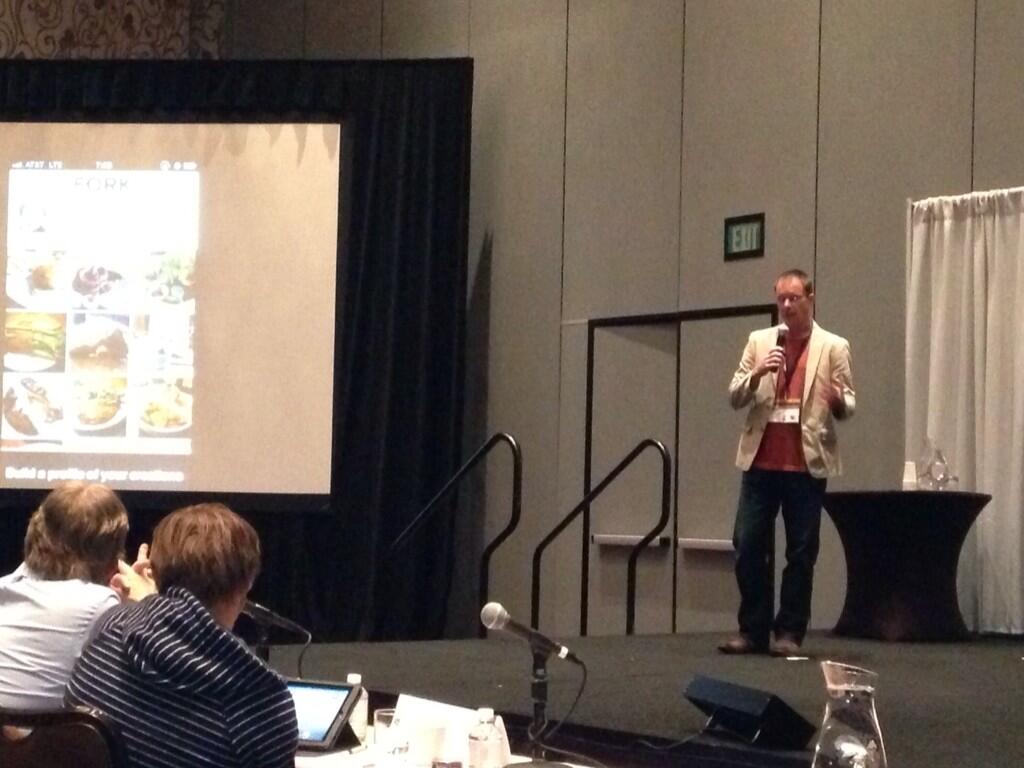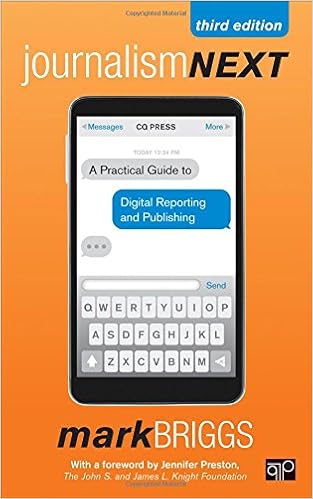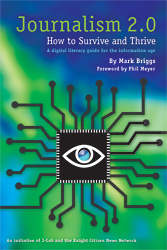You know about the “elevator pitch.” It’s the concept of being able to explain an idea in 30 seconds or less, about the time you’d spend talking to someone in an elevator. It’s a great test for any idea since the longer it takes you to explain said idea, the less grasp you really have on it.
The pitch contest has become an increasingly popular format at all kinds of tech startup events. Some, like the TechCrunch event in Seattle last month, are 1-minute pitches. Others, like the SXSW V2Venture conference I participated in last week in Las Vegas, use a 2-minute timeframe.
I pitched the idea of Fork, a new iPhone app I helped develop with some friends that is now available in the App Store. We were finalists in the Culture and Entertainment Category which featured some really interesting ideas. Zazoo won our category, which didn’t surprise anyone since they launched in Jan. and already have 300,000 users.
Even though we didn’t win, the experience (and the conference) were very worthwhile. If you have the opportunity / challenge of doing a short pitch in front of judges and an audience, here are a few key lessons I learned last week:
Get to the point, FAST! Explain your idea in short, simple, declarative sentences as soon as possible. No long, run-on sentences and no jargon. Some people like to imagine this as how you would explain your idea to your parents (assuming they are not in your industry.)
Hit the high points: There isn’t time to get into the details of how everything works or how your will acquire users. You can dive into the details the judges are most interested in during the Q&A time. And by staying out of the details you’ll have more time to cover more ground.
Prepare for the Q&A: At most pitch events, there is more time for Q&A than for pitching. In Vegas, we had two minutes to pitch but seven minutes to answer questions. Anticipate what questions you will face and prepare for 3-4 of them just like you prepare for the pitch.
Practice, practice, practice: This is the only way to know for sure that you can get through your entire pitch in the allotted time. Going over or not finishing is not an option and looks really bad. If you don’t have time to meet in-person with friends or advisors who can give you feedback, just capture your pitch on a quick video on your smartphone or laptop and email it to them.
So, what?: This tip comes from Emily Best, who delivered one of the most buzzed-about sessions last week at V2Venture. Judges (and audiences) are skeptical so make sure you answer their first, most obvious question after your pitch: so, what? If possible, end your pitch with your response to that question since it will be the last thing the judges hear before the Q&A.
Stand and deliver: Maintain eye contact with the judges throughout – don’t turn your back to them to look at the big screen behind you. And don’t move around the stage. It’s only 1-2 minutes. You should be able to stand in one place for that long.
For more guidance, check out this short video from Stanford’s Entrepreneurship Corner. If you follow these tips and have a clear, compelling story to tell, you’ll do well. And if you’re nervous, don’t worry, it will be over in two minutes (or less).

 Mark Briggs
Mark Briggs  Posted in
Posted in 





artikel yang sangat bagus, semoga bisa berguna bagi yang membacanya.. trms